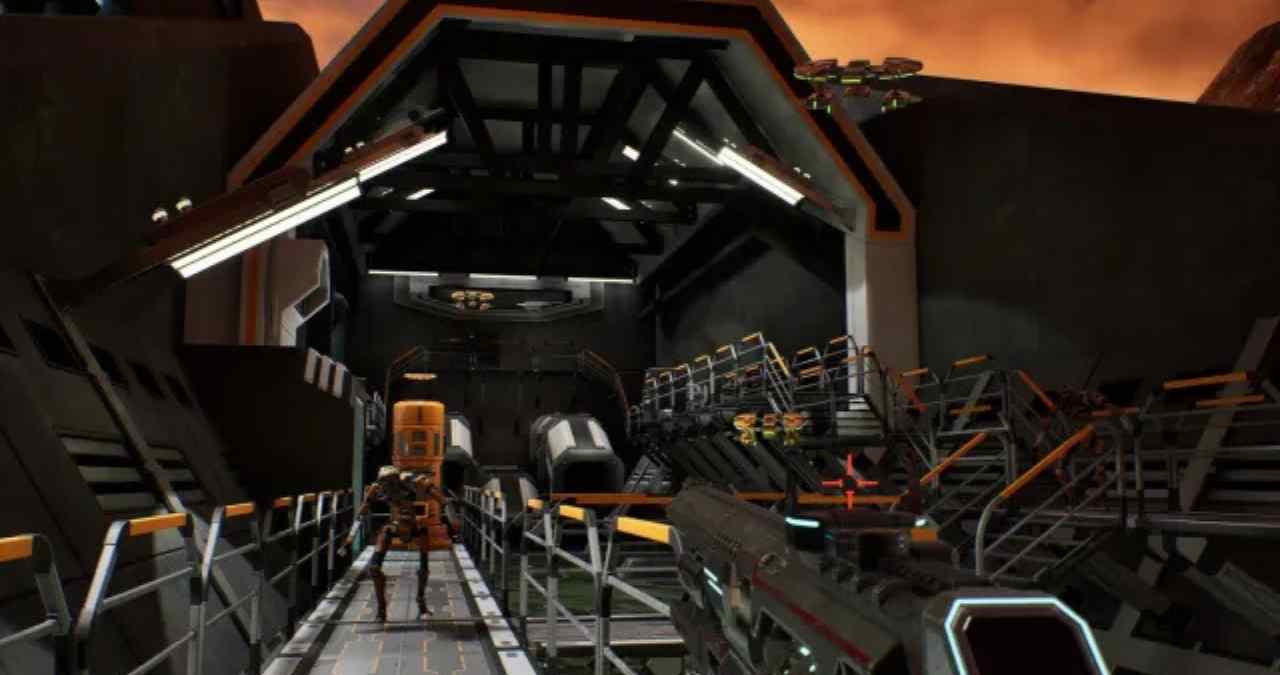Vampires and science fiction don’t usually share the same space, but Dixotomia is setting out to merge the two inside a VR framework. The game introduces a world where gothic horror meets futuristic design, layered with narrative choices and action-driven combat.
Rather than sticking to a single genre, Dixotomia positions itself at the intersection of shooter, immersive narrative, and supernatural thriller, aiming to create a hybrid experience that feels distinct from traditional VR titles.
A Shooter With Narrative Weight
At its foundation, Dixotomia is a VR shooter. Combat relies on firearms, positioning, and reaction time, but the game isn’t content to leave it there. The developers have woven in a choice-driven system where player decisions influence the story, branching the campaign into different outcomes.
This adds a level of replayability uncommon in VR shooters, where linear structures often dominate. How deep those choices run will determine whether the narrative framing holds up beyond surface-level variation.
Style and Atmosphere
Visually, the game sets itself apart by mixing gothic elements with futuristic design. Players move through environments where neon-lit technology and vampire iconography collide, creating a contrast that shapes the mood as much as the story.
This blend gives Dixotomia a unique identity, avoiding the generic sci-fi backdrops common in VR while still appealing to fans of darker, horror-inspired aesthetics. The vampires aren’t just window dressing they’re tied into the game’s core themes of transformation and duality.
Player Decisions and Consequences
The decision-making system is one of the most notable elements. Rather than purely cosmetic dialogue, choices impact character arcs and the direction of the campaign. This aligns Dixotomia more closely with narrative-heavy VR experiments like Lone Echo or The Invisible Hours than with straightforward shooters.
How meaningful these decisions feel in practice will be key. VR storytelling is still finding its balance between immersion and agency, and Dixotomia is clearly trying to lean into both.
Position in the VR Landscape
VR shooters have been plentiful, but most stick to familiar territory, wave-based combat, sci-fi corridors, or realistic simulations. Dixotomia stands out by trying to fuse that foundation with layered storytelling and a hybrid aesthetic.
It’s a risky approach, since combining multiple genres in VR can dilute focus. But if executed well, the game could appeal to players looking for something beyond standard action or horror experiences. By experimenting with duality Dixotomia aims to carve out space in a crowded VR catalog.
Virtual Reality Explorer & Game Reviewer
Always the first to plug in. VRSCOUT dives head-first into the most immersive VR worlds, analyzing mechanics, comfort, innovation, and that elusive “presence” factor. If he says it’s worth it, it probably is.




